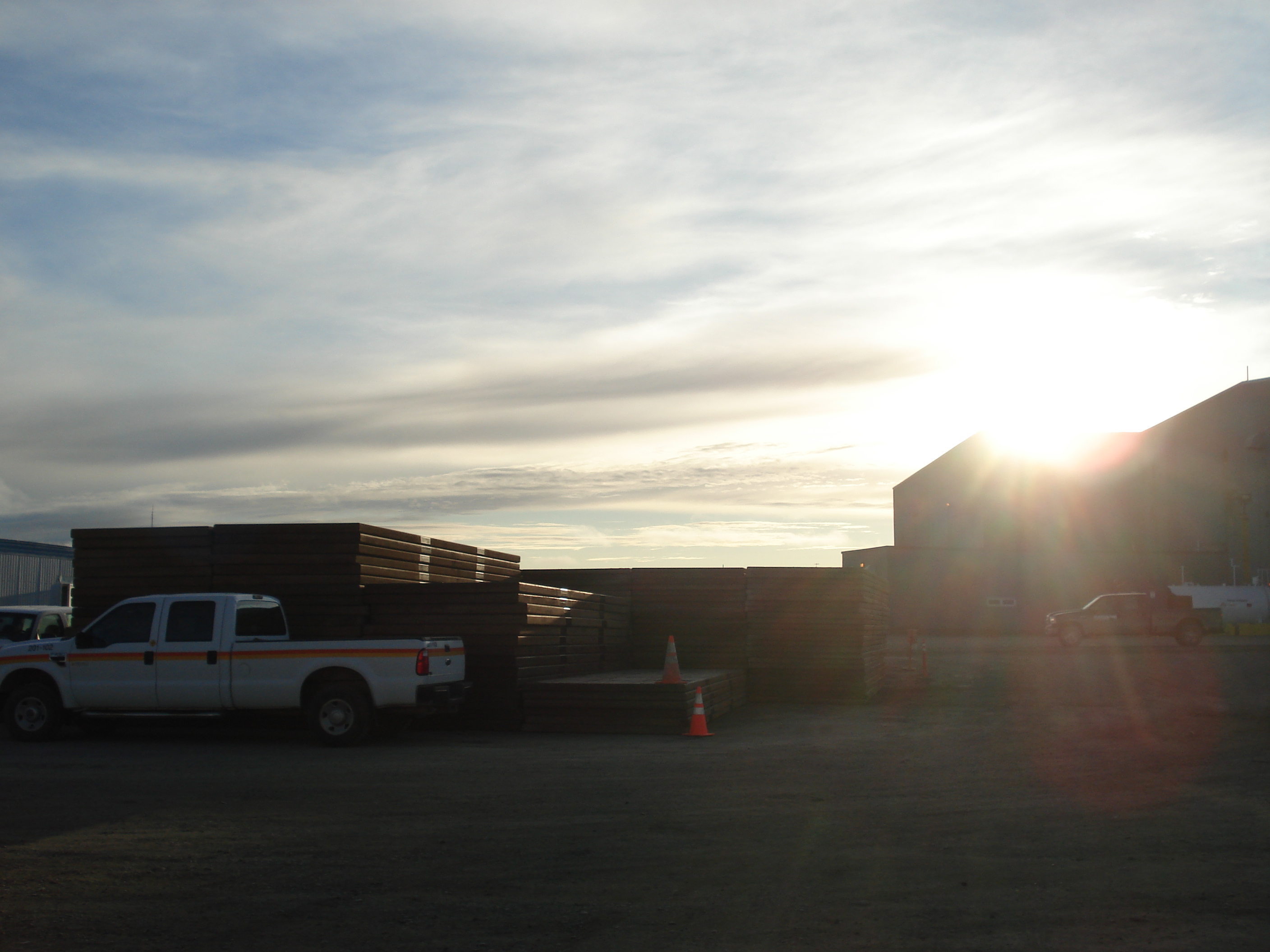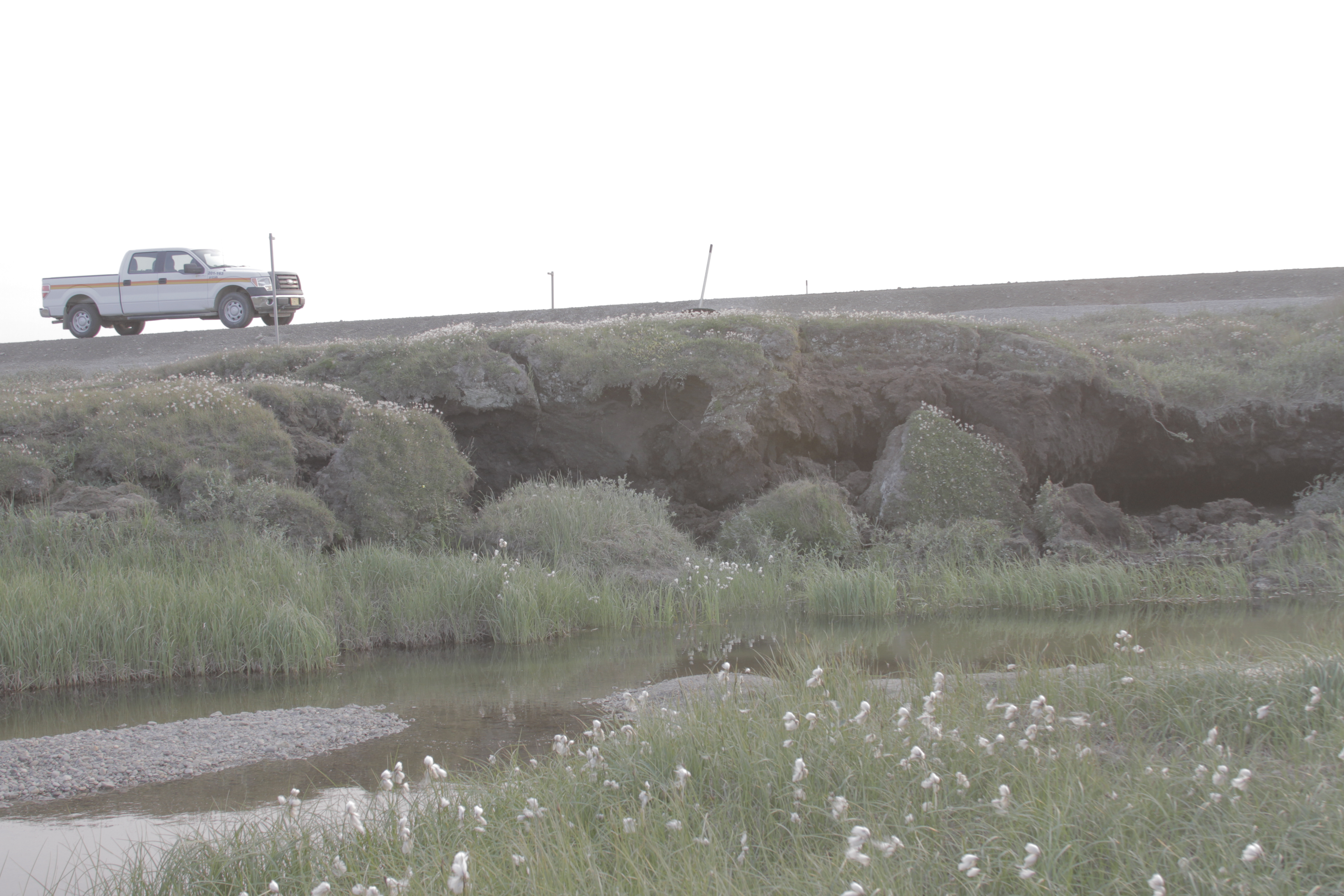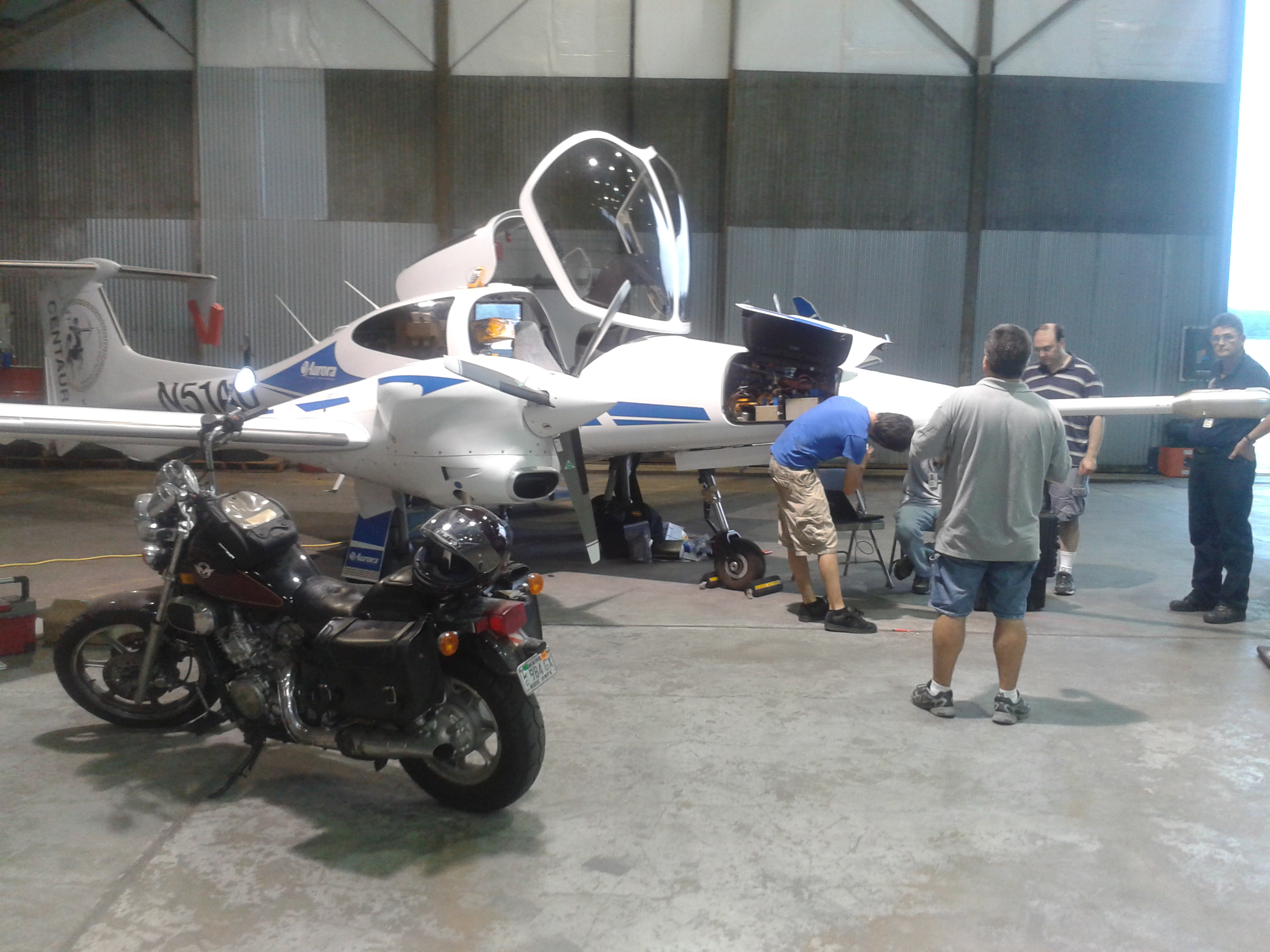I am in Deadhorse, AK. It is as lovely as it sounds. The area of Prudhoe Bay is here because there is oil on the North Slope. Everything looks like a huge, permanent construction site with the sole goal of pulling oil out of the ground. But that isn't why I am here.
Before that, some housekeeping.
I have been awful at keeping up with my posting. While I am finding it difficult to write interesting posts on the same topic iteratively, the more pressing reason for my consistent delays is this trip to the Arctic Circle for all of August to do research. My team has been working their asses off in Cambridge and in Manassas, VA, to get our instrument and our plane ready. You are going to see a lot of posts about how things are going up here.
Soon, my random rantings and musings will take over this blog, and the energy topics will be fewer and far between.
Back to Prudhoe Bay. My research.
Prudhoe Bay and the Melting Arctic
I stand now in eternal sunshine. That isn't some deep metaphor. The sun doesn't go down during the summer when we are this far north. I am here to measure CO2 and methane emissions from the melting Arctic. This has nothing to do with sunlight, and has everything to do with global warming.
The Arctic is Melting
Ice volume in the Arctic is dropping. I have covered this in a prior post. We also mentioned that the Arctic will experience more amplification of heating than most other parts of the world. The direct response of the Arctic is to melt deeper every year into the permafrost that underlies the topsoil, where all the remnant CO2 from millenia of photosynthesis is kept.
How did Millenia of Carbon get Stored in Arctic Soil?
Let's start by thinking about a tree. Trees grow leaves. The leaves store CO2. They pull it out of the atmosphere and store it as mass in the leaves. In the fall the leaves fall from the trees. Bacteria consume the leaves, turning it back into CO2 (or maybe a rabbit eats the leaf and turns it into CO2).
What happens when the leaf falls but doesn't get eaten? Most of the time it gets buried by snow or a bit of dirt and that CO2 is out of the atmosphere til Spring, when it warms up and the bacteria/rabbits get active again.
(This paragraph is skippable. Let's replace "leaves" here with all types of organic matter. Sometimes those "leaves" end up in anoxic environments, like the bottom of marshes, and there is nothing that can efficiently eat them. Or they get buried really deep really quickly by something, and get stores for a long long time. Then that CO2 is permanently removed from the atmosphere. Unless epochs later we dig it up and burn it as fossil fuel).
In the Arctic Circle, there are no trees. At some depth, maybe about 6 feet, the ground is permanently frozen. So tree roots can't go here. Moss and leaves grow here. But it is too cold for it to all get digested and eaten. Some of it pretty much sticks around forever. There are 300,000 years of undigested carbon in the first few meters of soil. Now it is warming up, and they that carbon might be ready to go.
Hastening this is a process called thermokarsting. In short, the ice in the soil (sometimes as much as 75% of the mass of the soil) melts. This ice held the soil together. Without it, the soil starts folding and collapsing, much like a riverbank does during a flood. Except it happens constantly in the warm days. This churning exposes tons of soil to the atmosphere. And this soil has carbon in it that can be eaten and turned into CO2 (This is a gross oversimplication, but the real details will only interest a few readers. Email me if you actually want more detail). In a bit of a slower process, underground bacteria can just eat the carbon at depth. In a more nefarious process, in anoxic environments the carbon can be converted to methane. Which is 23x stronger than CO2 on a 100 year timescale. The video below shows that these things produce enough methane so that the lakes can be lit on fire.
There are millions of lakes in Northern Alaska. If they convert even .05% of the carbon in the soil to methane, it will be more GHGs than all of mankind currently produces in a year. Same thing if 1% of the carbon in the soil is converted to just CO2. This is unlikely to happen in a short time period. It is quite possible in a long time period. And the scientific community doesn't have any data on it.
My team is measuring this. We are developing brand new technology to do this, and later teams will use similar or improved technology to continue the measurements. We are here to prove that it can be measured and that the technology works. Others will monitor the situation once we have proven that it can be monitored.
What we are doing is pretty neat. Direct from our webpage:
[Our system] has the capability to deliver to the Arctic research community a first-ever carbon isotopologue flux system that combines state-of-the art technologies in spectroscopy, infrared lasers, electronics and computing, advanced global navigation systems, high-performance airborne vertical wind speed measurements, and a state-of-the-art, high efficiency aircraft that provides regional coverage with disciplined costs.
That's all for now. Look forward to more pictures from Deadhorse and Prudhoe Bay, alongside what we are doing here.
Thanks for reading.
-Jason Munster



